Advertisement
Less blood loss and less drainage
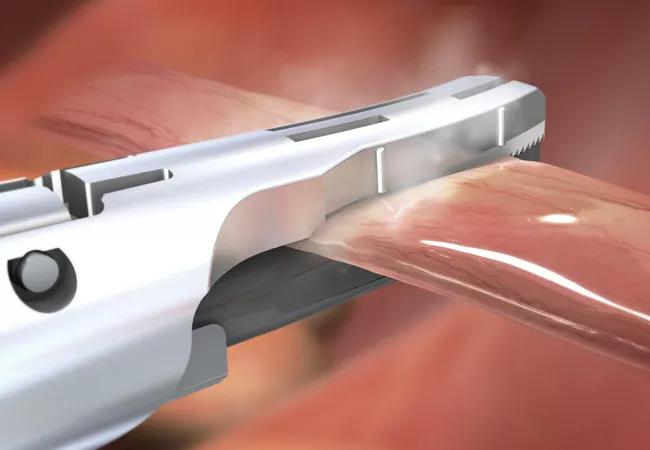
Advertisement
Cleveland Clinic is a non-profit academic medical center. Advertising on our site helps support our mission. We do not endorse non-Cleveland Clinic products or services. Policy
In a retrospective study conducted by Cleveland Clinic’s Department of Endocrine Surgery, we compared conventional knot tying vs. ultrasonic shears (US) in patients undergoing modified radical neck dissection for thyroid cancer. The study, which was published earlier this year in Surgical Innovation, found that estimated blood loss and drainage were less in the US group. The number of lymph nodes removed, duration of drainage and rate of lymphatic leak were similar between groups. Based on our favorable experience, we are currently using the US routinely for these procedures.
The US uses high-frequency mechanical energy to cut and coagulate tissue simultaneously. After the initial experience in abdominal surgery demonstrating reduced operative time and complications, the utility of the US was assessed in thyroid surgery by many studies. The US were shown to shorten the operative time in thyroidectomy compared with conventional knot tying.
In 2002, our group compared the US with the conventional knot-tying technique for vessel ligation in 171 patients undergoing either lobectomy or total thyroidectomy. Our results demonstrated that use of the US was safe and shortened operative time by almost 30 minutes compared with the conventional technique. However, the experience with neck dissection at that time was limited.
Between January 2000 and December 2010, 119 patients underwent modified radical neck dissection (MRND) within the Department of Endocrine Surgery at Cleveland Clinic. Among them, 47 patients underwent unilateral MRND, 32 patients underwent repeat limited neck dissection, and 40 patients had MRND with additional concomitant surgical procedures performed, including thyroidectomy (n = 32), parathyroid autotransplantation (n = 7) and bilateral neck dissection (n = 1).
Overall, the US was used in 68 of these cases and conventional knot tying in 51. For homogeneity between groups, statistical comparisons were performed for the 47 patients undergoing first-time unilateral MRND without concomitant additional surgical procedures. The choice between the US and knot tying depended on surgeon preference and availability of equipment. All procedures were performed under endotracheal general anesthesia with standard technique, by one of four endocrine surgeons.
Advertisement
A standard MRND was performed by removal of the lymphatic tissue at levels II, III, IV and V. Hemostasis was obtained with knot tying in the conventional group and with the US in the other group. A 7-French Jackson-Pratt® drain was placed in all patients.
Both the US and knot-tying groups were comparable regarding clinical and demographic features (Table 1). Estimated blood loss was less in the US group compared with the knot-tying group (P = 0.006). Drain output on postoperative day one and at one week was significantly less for the US group vs. the knot-tying group (P = 0.026 and P = 0.033, respectively). There were no intraoperative complications in either group. Lymphatic leak rates were similar: two in the US group and two in the knot-tying group (P = 0.52), which required a second operation for repair. There were no bleeding, septic or nerve complications.
Operative time was similar between the US and knot-tying groups (P = 0.45). When the operative time was compared for individual surgeons, there was a time reduction of 12 to 40 minutes with the use of the US when compared with knot tying. On univariate analysis, the number of lymph nodes (LNs) removed affected operative time (P = 0.002, Table 2). With an even distribution of surgeons in the two groups (P = 0.51), multivariate analysis showed that surgeon experience and the number of LNs removed were independent predictors of operative time for MRND (Table 3).
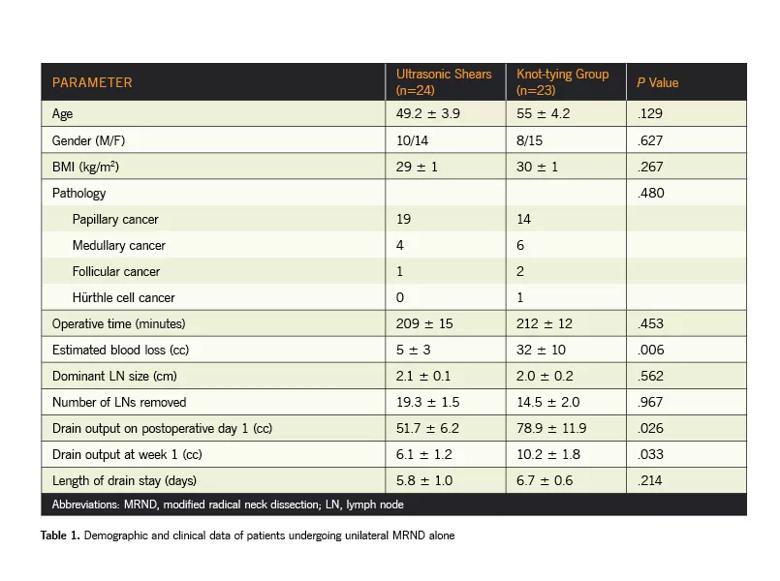
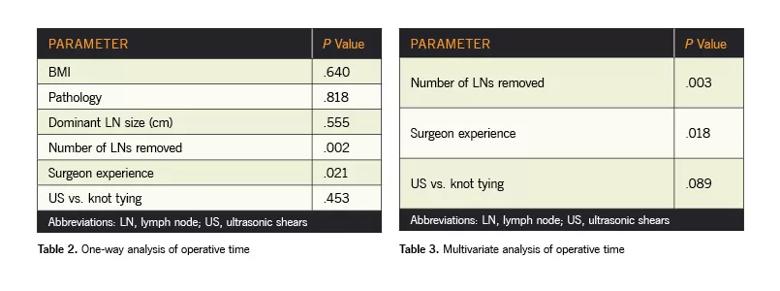
There is a clear advantage of the US when compared with knot tying for reducing blood loss, lymphatic drainage and operative times in MRND for thyroid cancer. We believe that operative time in neck surgery also depends on surgeon experience and extent of pathology, as shown in our study.
As interest in using the US in various surgical procedures increases, we believe that our experience will provide an initial insight regarding the value of the US as well as future new generation vessel sealers for MRNDs.
Image courtesy of ©Ethicon, Inc. 2016. Reproduced with permission.
Advertisement
Advertisement
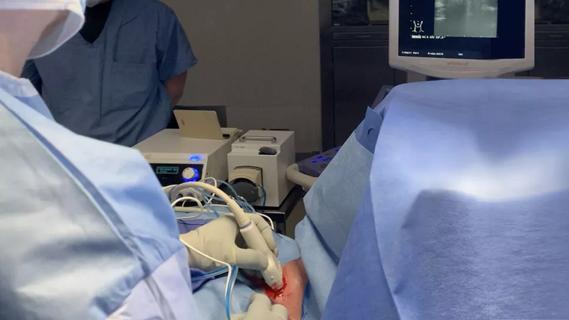
Radiofrequency ablation significantly reduces symptom severity, shrinks nodules
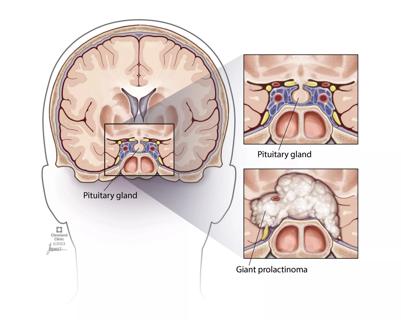
Analysis examines surgical resection of rare pituitary tumors

The program uses thyroid nodule radiofrequency ablation to treat patients who want to be proactive with their care

Prospective study demonstrates value of technology beyond what can be seen by the eyes
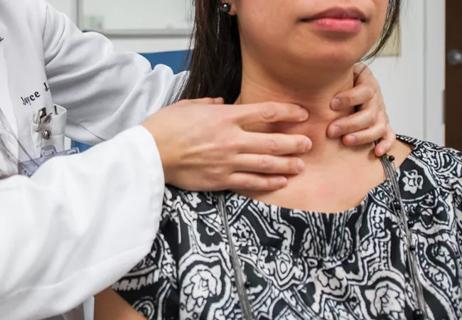
New tool may complement workup and treatment of parathyroid and thyroid patients
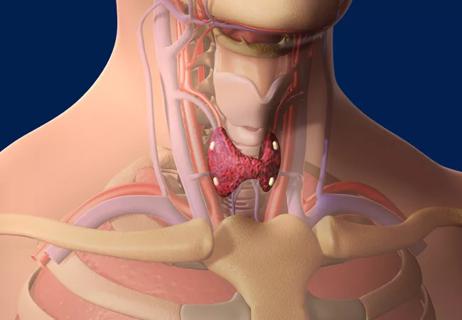
How it helps patients

Patients get to choose incision site

Cleveland Clinic Surgeon Eren Berber, MD, to lead Endocrine Surgery Session